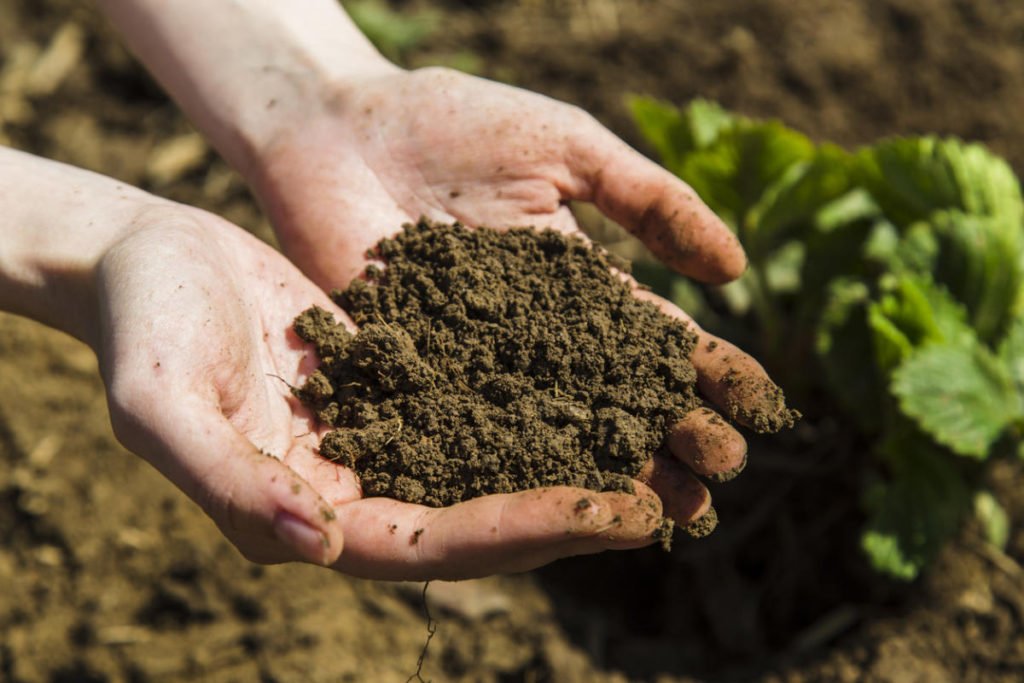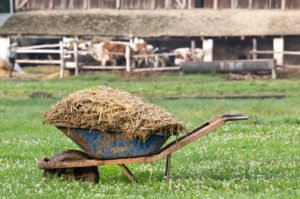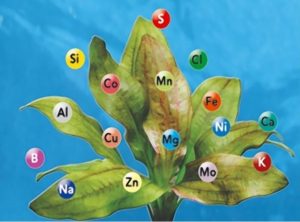We all know that cultivated plants are very fond of various top dressing. You will not find any fertilizers now: mineral, organic, bacterial; and even additives for plants (growth stimulants). All of them are the food of our green World, and organic fertilizers come out on top here. Let’s talk about their value for plants.
So, the composition of organic fertilizers includes only natural ingredients. In addition to minerals, they contain potassium, phosphorus, nitrogen, calcium, iron, magnesium and so on. The difference is that all these elements have a natural (plant or animal) origin.
All natural organic matter is in harmonious symbiosis with the soil, enriches it with beneficial bacteria and microorganisms, has a beneficial effect on the development and productivity of plants. The main organic fertilizers include manure, humus, peat, bird droppings and various compost. Let’s consider each of these types of organic fertilizers.
Manure
Manure from different animal species differs in composition, fresh it is undesirable to introduce it into the soil, as it contains plant seeds, pathogenic bacteria and even helminth eggs. But settled from 4 months to 3 years is an excellent tool for enriching various types of soils.
The settled manure is introduced into the soil when digging: from 5 kg to 10 kg per 1 sq. m (11-22 lb/1.2 sq. yard). You can prepare a solution for watering: add 2-3 kg (4.4-6.6 lb) of manure to 10 liters of water. Usually it is prepared in advance and allowed to infuse for 10-15 days. As for getting rid of the unpleasant smell, silica is added to the barrel with the infusion: 200-300 g/100 l (7-10.5 oz/100 l). It is useful to add superphosphate to the infusion of manure: 0.5 kg/ 100 l (1.1 lb/100 l).
Manure is suitable for all plants and for all types of soil, and 2-3 fertilizing with water per season is enough to get a good harvest and improve the decorative qualities of plants.
Peat
By itself, it does not contain so many nutrients, but it increases the humus content in the soil and significantly improves its physiological properties. In addition, the soil, abundantly fertilized with peat, becomes light and “airy”, and the roots of our green pets feel very at ease in such conditions.

Peat differs in the degree of decomposition and is:
- riding peat is poorly decomposed parts of plants (leaves, branches, roots, etc.), which is not usually used as fertilizer, but is excellent for mulching (sheltering) plants for the winter and as bedding for pets;
- lowland peat is completely decomposed plant remains (usually 8-15 cm/0.3-0.5 in below the soil level). It is often used for the preparation of peat-mineral compost. It is especially good to introduce peat into the soil when growing vegetable crops and delicate exotic plants;
- transitional – an intermediate state of peat between upper and lowland. It is usually used in compost of various compositions. Mineral fertilizers, bird droppings or manure, phosphorus fertilizers, micro fertilizers, lime or ash are added.
Peat can be harvested in swamps and decomposed for ventilation if you are going to mulch the soil, and you can put it in a compost heap to rot if you want to use it as fertilizer. By the way, peat reduces the nitrate content in fruits by almost 2 times and significantly reduces the effect of pesticides in the soil.
To improve the fertile properties of the soil, it is usually enough to add 2-3 buckets of peat per 1 m of soil. And it is better to scatter it evenly in the garden in the fall, and dig it out only in the spring, before planting. It is useful to add wood ash to peat – 200 g (7 oz), as well as a little superphosphate – 20-30 g (0.7-1 oz).
Bird droppings
Poultry manure is considered a very good organic fertilizer, and the most saturated in chemical composition is chicken and pigeon. Duck and goose are less valuable.

However, an overabundance of bird droppings in the soil is fraught with the accumulation of nitrates in plants, so try to adhere to the following proportions:
- raw poultry manure: 0.5 kg per 1 sq. m (1.1 lb/1.2 sq. yard) soil;
- dry bird droppings: 0.2 kg per 1 sq. m (0.44 lb/1.2 sq. yard) of soil.
The norms are average, because the quality of the litter depends on the type of its “producer”. And when buying a ready-made fertilizer, instructions for use are written on the package.
You can also prepare an aqueous extract of manure for fertilizing plants. To do this, it is filled with water in a ratio of 1: 1, the container is tightly covered with a lid, and a week later a tenth of the water is added to the infusion. This solution is watered with plants 2-3 times per season.
Compost
Compost is a mixture of various organic fertilizers that are stacked in heaps, pits, boxes.

A layer of 10-15 cm (0.35-0.5 in) of fallen leaves, sawdust, shavings or peat is laid on the bottom. Compost is periodically moistened and after 7-12 months it is quite ready for use. To increase the value of compost, you can add superphosphate, potassium and wood ash: 0.5 kg (1.1 lb) of superphosphate, 1 kg (2.2 lb) of potassium salt and 4-5 kg (8.8-11 lb) of wood ash per 100 kg (220 lb) of components. Below are a couple of simple compost recipes, but of course you can combine them yourself.
Compost from plants
Take weeds, grass, fallen leaves, add garden soil and manure to them in a ratio of 2:1:1, put them in a box, fill with water, close the lid. Leave to rot for 7-12 months (or for a longer period).
Manure compost
Mix the manure with garden soil and peat (5:1:1), put it in boxes, fill it with water, and after 5-6 months you will have a ready-made organic fertilizer. And the longer the manure compost is stored, the more valuable its quality becomes.
Sawdust as fertilizer
Usually sawdust is used as a fertilizer in combination with urea, since they practically do not contain nitrogen. Dilute 250 grams (8.8 oz) of urea in 10 liters of water and pour 3 buckets of sawdust. It will be an excellent organic additive to heavy clay and loamy soils.

Sawdust treated with urea is introduced into the soil in autumn, no more than 1 bucket per 2 sq. m (2.4 sq. yard). They are also good for mulching (sheltering) plants for the winter.
Bone meal
Bone meal is rich in calcium and phosphorus and is introduced into the soil at the rate of 3 kg per 1 sq. m (6.6 lb/1.2 sq. yard); as a top dressing for plants – it accelerates their growth almost 2 times.
To prepare an aqueous solution, pour 1 kg (2.2 lb ) of bone meal with 20 liters of boiling water and let it brew for a week. Stir the mixture periodically, and then strain and dilute with water 1:10. Feed the plants with a solution once a month, and the result will please you. In addition, bone meal is added to various types of compost for heavy soils. On light soils, it is better to use it in its pure form.






